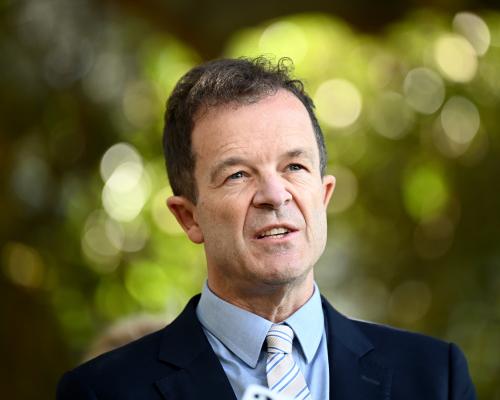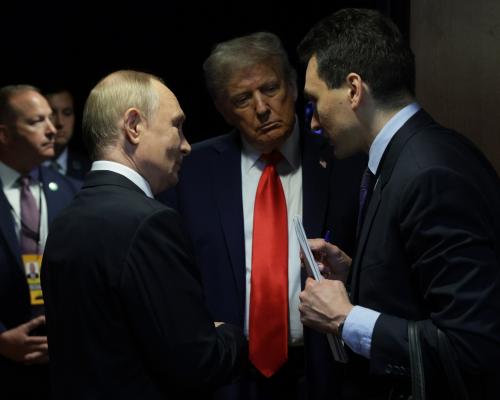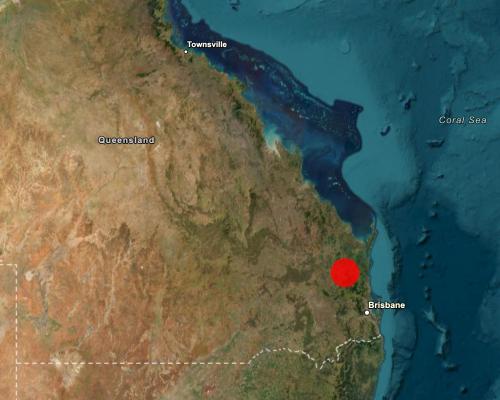
The never-ending war within the Coalition over energy policy and climate targets appears to have infected the New South Wales Liberals, as they struggle to restore the administration of their branch and get traction with voters.
It’s bad news for the NSW opposition leader, Mark Speakman, whose hold on the leadership is being increasingly questioned.
Until now, the main battle ground for the renewed climate wars has been Canberra, where the right of the Liberal party and the Nationals from Queensland – aided and abetted by US president Donald Trump – have used every opportunity to foment discontent.
The federal Coalition leader, Sussan Ley, has promised to review the Coalition’s energy policy, but there will be no easy answers. She will need to juggle the demands of MPs such as Nationals senator Matt Canavan and Liberal Andrew Hastie that she drop the net zero target, with the views of her city MPs, who know they could go the way of their former colleagues who lost seats to teal independents.
Let alone doing the right thing for the planet.
For the NSW Coalition, energy policy has been an area of mostly bipartisan agreement – until now.
In 2020, the then energy minister Matt Kean, a Liberal who now chairs the Climate Change Authority, released the energy roadmap that showed how NSW would meet its objective to deliver a 70% cut in emissions by 2035 compared to 2005 levels, and net zero by 2050.
It was supported by both sides.
But last week the first signs of an unravelling emerged.
Sign up: AU Breaking News email
Just before the NSW parliament rose for a long break, the Liberal MP for Goulburn, Wendy Tuckerman, resigned from the shadow ministry over her own party’s failure to listen to her concerns about windfarms.
Ostensibly, it was over a failure of the leadership to consult on the electricity infrastructure bill, which the government said was urgent.
The bill gave the energy minister, Penny Sharpe, the power to fast-track investments in synchronous condensers, which are urgently needed for grid stability. According to her office, it did no more than broaden the definition of priority infrastructure to ensure investments in this critical infrastructure by the privately owned electricity distributors could proceed.
Whether it did more than that depends on who you ask.
The Minns government says it doesn’t alter the planning and consultation process for major infrastructure such as transmission lines.
But it was a bridge too far for Tuckerman, whose electorate is part of a renewable energy zone and has seen dozens of projects proposed.
“I have had countless calls, emails and comments from community members that feel like they have just been kicked while they are down. They are bearing the brunt of poor planning and by the government’s lack of accountability. They are not being listened to,” she said.
“I can no longer in good conscience be a part of a process that sidelines the voices of constituents and regional communities, or which undermines my ability to represent the people that put me here.”
There’s no doubt that Tuckerman’s electorate is concerned about the scale of windfarm development – as is the Orana region near Dubbo.
But the concerns have been turbocharged and taken to a wider audience by the Daily Telegraph, which has run no fewer than five stories in the space of two weeks about the harm that windfarms were causing farmers in Tuckerman’s electorate.
These were then amplified across other News Corp platforms including news.com.au and Sky News, who interviewed the Telegraph journalists about their coverage, and by 2GB.
At the same time, the rightwing advocacy group Advance has announced a campaign to kill off “weakling” Liberals who support the net zero climate target.
Advance members are being bombarded with emails seeking donations, with the aim to raise $450,000 before the end of August.
Most of Advance’s efforts seem focused on the federal Liberals, but the anti-net zero sentiment has reached the NSW Nationals, at least in the grassroots party. At their conference in June in Coffs Harbour, they voted to drop support for net zero.
The problem for Speakman is that the climate issue could quickly become a wedge that will be used by the right to further fuel the leadership speculation that is already bubbling.
Speakman is undoubtedly under pressure. There’s no immediate appetite to replace him, among the dominant moderate faction from which he comes.
But there is concern about a lack of cut-through, particularly as a recent Resolve poll in July in the Sydney Morning Herald showed Labor with a commanding primary vote lead over the Coalition of 38% (up five points on the last result in April) to 32% (down four), with the Greens up two to 13%.
The Poll Bludger estimated this would imply a two-party Labor lead of at least 57-43, compared with 54.3-45.7 at the March 2023 election.
A 5% swing would see the Liberals lose another five seats and condemn them to a further two terms of opposition.
“People are starting to worry about saving the furniture,” one Liberal said.
The Kiama byelection on 13 September will be a test for Speakman. If he puts in a good showing, the troops might calm down. But with an election due in March 2027, the window for leadership bloodletting is fast approaching.
Both sides were claiming underdog status in the South Coast seat, which was most recently held by the Liberal turned Independent Gareth Ward, who resigned after being convicted of rape. Ward enjoyed enormous personal support even after the charges were laid, so it’s difficult to say whether voters will chose to punish the Liberals or follow the conventional wisdom of byelections and give the government of the day a good kick.
In the meantime, the climate wars are simmering again and they’ve reached the doors of Macquarie Street.
A NSW parliamentary committee is due to release a report on the renewable energy zones and their impact on rural communities as early as next week. It will provide an opportunity for the opponents of net zero to target more “weakling” Liberals – and it will test out Speakman’s skill in managing a difficult issue for his troops.





